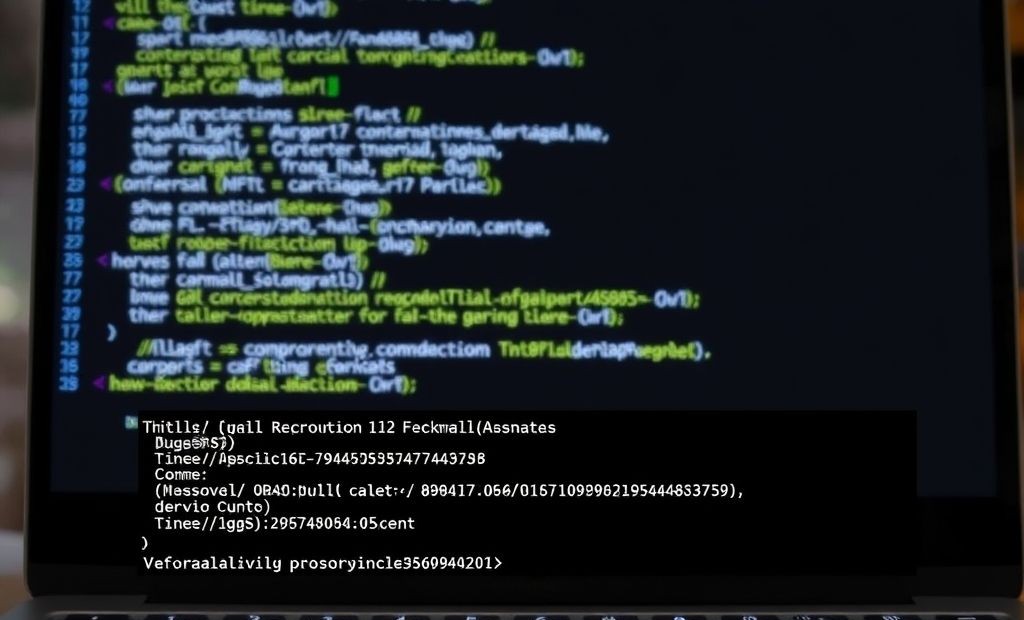Level Up Your Workflow: Advanced Techniques for Mastering the Command Line Interface

Unleash the Power: Advanced Command Line Interface Techniques The Command Line Interface (CLI), often overlooked in our GUI-driven world, is a powerhouse of efficiency and...
⏱️ Estimated reading time: 3 min
Latest News
Unleash the Power: Advanced Command Line Interface Techniques
The Command Line Interface (CLI), often overlooked in our GUI-driven world, is a powerhouse of efficiency and control. Far from being a relic of the past, the CLI remains a crucial tool for developers, system administrators, and power users alike. This article delves into advanced CLI techniques that can significantly boost your productivity and unlock a deeper understanding of your system.
Beyond the Basics: Navigating Like a Pro
Everyone knows cd and ls, but let’s move beyond the fundamentals:
- Globbing with Wildcards: Mastering wildcards (
*,?,[]) allows you to target multiple files simultaneously. For example,rm *.txtdeletes all text files in the current directory. - Tab Completion: Your best friend! Type a partial command or filename, press Tab, and the CLI will attempt to complete it. Pressing Tab twice shows you all possible completions.
- Command History: Use the Up and Down arrow keys to navigate through your previously executed commands.
Ctrl+Rallows you to search your command history for specific commands. - Pushd and Popd: Tired of typing long directory paths?
pushd /path/to/directorysaves the current directory and changes to the specified directory.popdreturns you to the previously saved directory.
Command Chaining and Redirection: Orchestrating Processes
One of the CLI’s greatest strengths is its ability to combine and redirect commands:
- Piping (|): The pipe operator sends the output of one command as input to another. For example,
ls -l | grep "keyword"lists all files in the current directory and then filters the output to show only lines containing the word “keyword”. - Redirection (> and >>): Redirect output to a file.
command > file.txtoverwrites the file, whilecommand >> file.txtappends to the file. - Error Redirection (2>): Redirect error messages.
command 2> error.logsends error messages to a separate file. - Combining Redirection:
command > output.txt 2>&1sends both standard output and error output to the same file.
Example: Finding Large Files
find . -type f -size +10M | xargs ls -l | sort -nk 5
This command finds all files larger than 10MB in the current directory (.), lists their details (ls -l), and then sorts them numerically by size (sort -nk 5).
Aliases and Functions: Customizing Your Experience
Make the CLI work for you by creating custom aliases and functions:
- Aliases: Shorten frequently used commands. For example,
alias la='ls -la'creates an aliaslathat lists all files and directories, including hidden ones, in a long format. - Functions: Create more complex commands that can take arguments. Define functions in your shell configuration file (e.g.,
.bashrcor.zshrc).
Example: A Function to Create and Navigate to a New Directory
mkcd() {
mkdir "$1"
cd "$1"
}
This function takes a directory name as an argument, creates the directory, and then changes the current directory to the newly created one. To use it, simply type mkcd mynewdirectory.
Mastering Text Processing with `sed` and `awk`
sed and awk are powerful text processing tools that can perform complex manipulations on text files directly from the command line.
- Sed (Stream Editor): For replacing text, deleting lines, and performing other basic text transformations. Example:
sed 's/oldtext/newtext/g' input.txt > output.txt(replaces all instances of “oldtext” with “newtext”). - Awk: A more advanced tool for pattern matching and processing structured text (like CSV files). Awk excels at extracting specific fields from text based on delimiters.
Conclusion: Embrace the CLI Power
By mastering these advanced CLI techniques, you can significantly improve your workflow, automate tasks, and gain a deeper understanding of your operating system. Don’t be afraid to experiment and explore – the command line is a vast and powerful tool waiting to be unlocked.
Related Posts

WhatsApp’s New In-App Message Translation
WhatsApp Now Translates Messages Natively WhatsApp has launched a message translation feature for both iOS...
September 23, 2025

Meta Enters AI Regulation Fight with New Super PAC
Meta Launches Super PAC to Tackle AI Regulation Meta has recently launched a super PAC...
September 23, 2025

Airport Disruptions Continue After Cyberattack
European Airports Still Grappling with Aftermath of Cyberattack Several European airports are still experiencing disruptions...
September 23, 2025











Leave a Reply